Rolling pins: description of varieties and nuances of choice
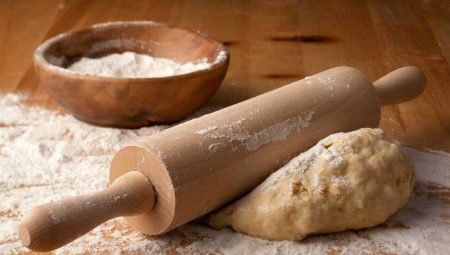
The rolling pin is perhaps the most famous kitchen "character". Of course, this is largely due to anecdotes where utensils act as a female instrument of reprisal against a guilty husband. But, putting aside the jokes, we can say with confidence that how delicious the pie or noodles turn out depends on her to a large extent.
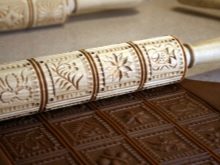
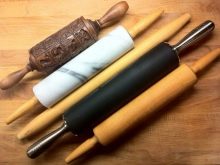
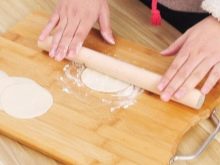
History
A fairly ordinary and well-known rolling pin has a rich history. Scientists have found that about 3,000 years ago, the Etruscans actively used this type of utensils in everyday life. However, in other parts of the world, devices were also common. They were made of stone, clay, or wood. It is worth noting that rolling pins were not always used to work with the dough. They also beat meat and chopped spices and roots. And in the IV century BC. NS. in ancient Greece, the product was used for smoothing or, on the contrary, pleating fabrics. Before rolling, the fabric was kept in a special solution.
At the end of the 19th century, a wooden rolling pin with handles was invented for rolling out dough. It is fair to say that such rolling pins began to appear in different cities, however, this invention was patented by the African American Reed. He made a movable rotating cylinder with handles that remained in a fixed position.
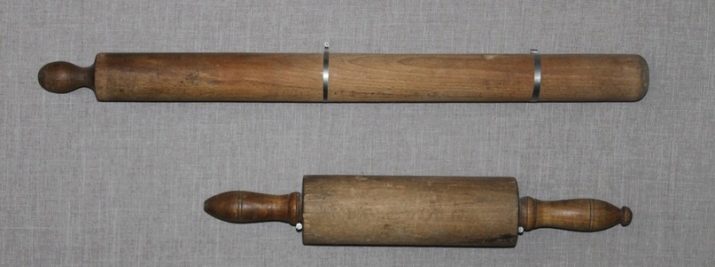
The history of glass rolling pins is especially interesting and romantic. They were given by English sailors to their wives when they went sailing. The fragile gift was decorated with touching drawings and inscriptions. Naturally, such a present was not used in the kitchen, but was kept as a souvenir and talisman.It was believed that if the rolling pin cracked or broke - this is a bad sign, the ship was wrecked. Traditionally, glassware was hollow and had a single handle. Tea and spices could be poured inside. But the wives of the sailors poured sea salt there, believing that it would save from the evil eye and troubles on the water.
The most famous glass rolling pins at that time were the cobalt Bristol (produced in the city of Bristol), they were of high value. More affordable analogues were Nailsea (from the city of Nailsea). They were made from bottle glass.
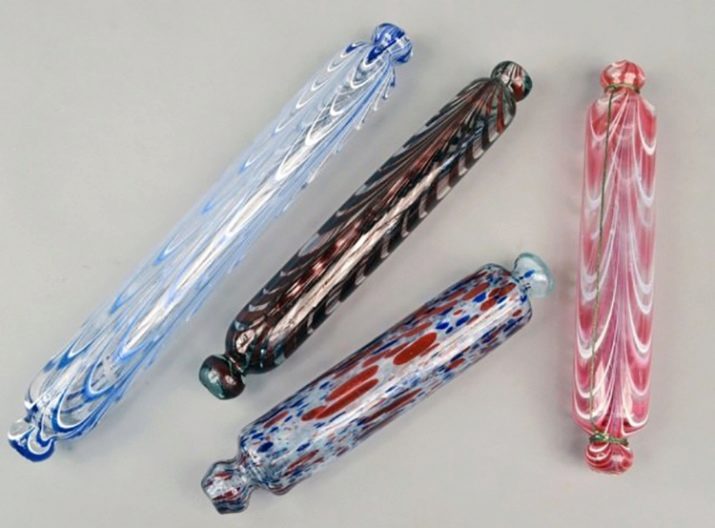
At the beginning of the 19th century, ceramic rolling pins also appeared, which was associated with the popularization of health and hygiene. Ceramic counterparts were easier to wash than wooden ones. The dough did not stick to them, and the temperature of the rolling pin and dough could be adjusted by cooling or heating the accessory. The only drawback of ceramics is fragility.
Porcelain and ceramics factories instantly jumped at the idea and started producing utensils. The most popular at that time were blue and white products from the German plant "Meissen" and the Dutch "Delft". Since the ceramic rolling pins required careful handling, they needed to be improved. This is how rotating (roller) ceramic versions with wooden handles appeared.
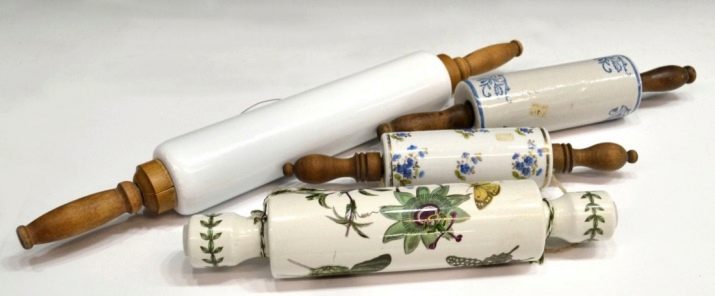
Description
A rolling pin is a type of kitchen utensil that is a cylindrical object designed for rolling out dough. Some models are equipped with handles.
Rolling pins can be made from different materials and have different configurations.
The choice of a particular model depends on a number of factors, but primarily on the purpose of the rolling pin.
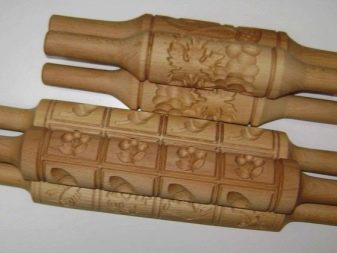
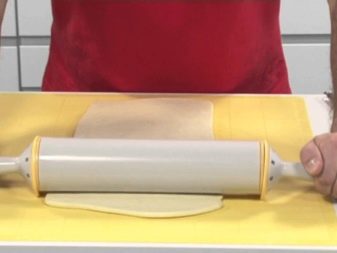
Varieties
In terms of design, rolling pins can be divided into 2 groups - those with and without handles (in the form of a roller). The handles on the accessory make rolling out the dough more convenient - hands remain clean as well as the dough itself. But no particular relief of labor was found when rolling out with a product with handles. Another advantage of working with such utensils is protection from overheating due to friction of hands on it. This is especially true when a recipe calls for a rolling pin to be chilled or dough is being rolled out of the refrigerator.
Rolling pin handles can be a continuation of the roller with a working surface or attached separately. Today manufacturers also offer devices with folding handles. Often the latter are made from other materials.
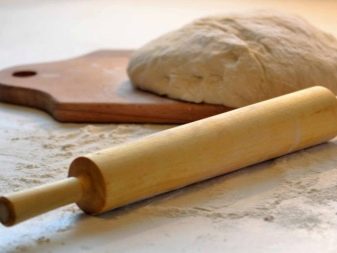
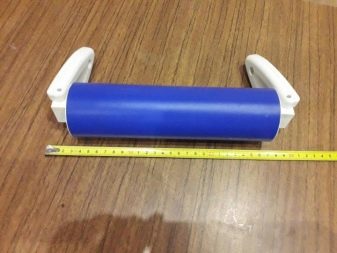
More interesting are classic cylindrical models. They are rightfully considered universal, because they are suitable for working with dough even on a baking sheet or in a frying pan. An analogue with handles in this case will be inconvenient. In addition, many housewives use such a rolling pin as a crush.
One more type can be distinguished - cylinders with a thickened middle part (working surface). Such devices are convenient for working with dense cakes (for example, for whitewash), but rolling thin dough with such utensils is uncomfortable.
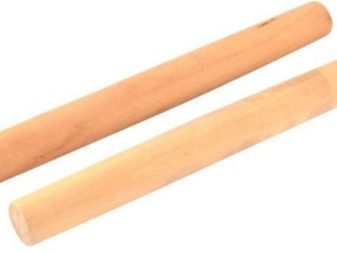
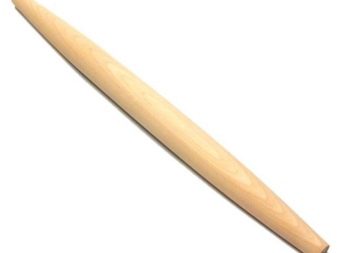
If we talk about new products, then it is worth mentioning rolling pin... The product consists of a rotating part and handles. You can even hold onto the latter, since only the working surface rotates. Such rolling pins are especially convenient for those who work with large volumes of dough: hands get tired less, calluses are not rubbed.
As a rule, products with revolving handles are combined: wood and metal, metal and silicone. It is convenient if the handles do not slip and lie comfortably in the hands, and are also easy to clean.

The design features of the rolling pins are also determined by their purpose. For example, in addition to the well-known cylindrical rolling pin, there is a raviolnitsa. It can be used to sculpt ravioli whose dough texture is close to that of a dumpling.
Raviolnitsa greatly simplifies and speeds up the sculpting: minced meat is placed on the dough layer and covered with a second layer. Now it remains to go through the dough with a rolling pin once to form the ravioli.
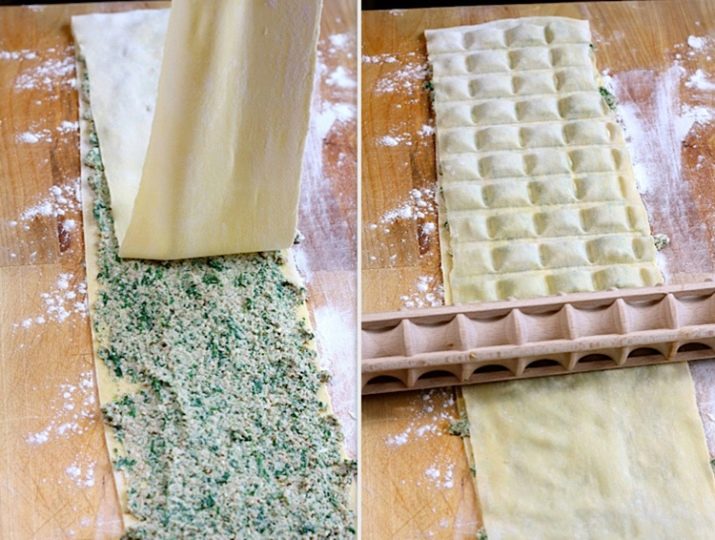
Rolling noodle cutter - an irreplaceable assistant for those who love homemade noodles. It is necessary to roll out the dough thinly with the usual rolling pin, and then with a noodle cutter. As a result, you will have perfectly thin and uniform noodles. And again there will be savings in time and effort.
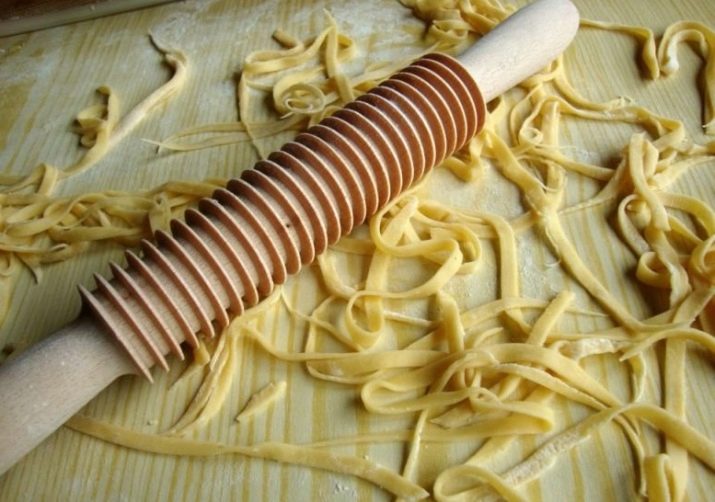
Product "3 in 1" will win the hearts of those who value functionality and ergonomics. Thanks to its design features, it can act as a bottle for storing oil or sauce, a pestle for chopping spices, and a rolling pin.
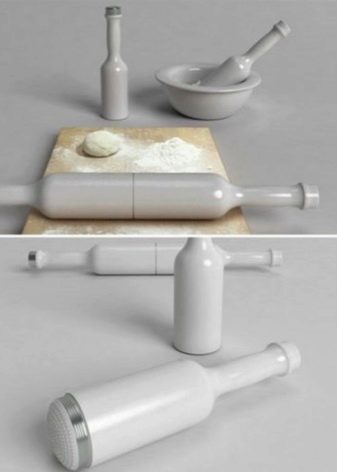

Another multifunctional device - rolling pin for cookies. It is a classic plastic cylindrical helper with handles. However, the inside of the product is hollow, it opens and holds the cookie cutters. It is very convenient, since the molds will definitely not get lost and will not require a separate storage space.

Dimensions (edit)
The dimensions of the rolling pin, namely, the length and diameter, are determined by the purpose of the product. Do not neglect the choice of utensils in terms of their size. Some devices are designed to roll out large layers of dough, others allow you to roll out the dough directly on a baking sheet or in a pan, saving time and effort.
A device 25-30 cm long and 5-6 cm in diameter is considered universal and the most popular. It is suitable for working with small products and rolling out medium-sized layers. For larger ones, it is recommended to choose a rolling pin, the length of which is 40-50 cm. Together with the size, the diameter of the product invariably increases - it is 8-10 cm. Small products 7-10 cm long are necessary for rolling out small piece products: dough for pies, dumplings, manti. Sometimes they can have one handle in the manner of a roller. Such devices are indispensable in conditions of a lack of space.

There are also thin long accessories called ukluv. They are used for rolling Armenian lavash, baklava. They are also convenient for rolling out pizza, dough for some pies. You can also wrap layers of dough on such utensils. Some items are up to a meter long.

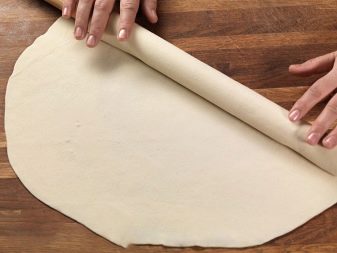
Materials (edit)
Differences may also apply to the materials from which the rolling pin is made. Let's consider the most common ones.
Wood
One of the most popular options, attracting practicality, durability, optimal weight. On average, it is 0.5-1 kg - that is, the devices are not heavy, but not too light either. However, wooden products also have disadvantages. First of all, they require special care. Wood does not tolerate moisture, which makes it difficult to wash and disinfect the accessory. Do not soak the rolling pin, use a dishwasher for washing.
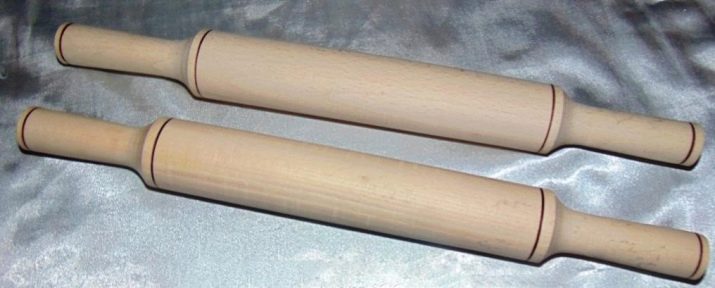
The dough sticks strongly to the wooden surface, especially when it is soft. You have to add flour all the time or use a film. Finally, chipping and cracking may appear on the wooden surface during use. This can cause bacteria to develop on the surface, and burrs on the rolling pin can injure your hands.
When choosing a wooden rolling pin, preference should be given to those devices that are made of hard wood: beech, linden, oak. You can also consider the bamboo option.
Despite the fact that bamboo is not a tree, rolling pins from it are still classified as wood.


Silicone
Modern elastic material that has replaced the wooden counterpart. Silicone products are easy to use, however, the dough does not stick to them. For greater convenience, experienced housewives use rolling pins in conjunction with silicone rugs.
An important point - silicone rolling pins are quite light, so they are not suitable for all types of dough. It is optimal to use them if you need to roll out soft dough, and the amount of work itself is small. Otherwise, you can use silicone counterparts with a weighting agent. The latter is a metal cylinder that is fixed inside the accessory.
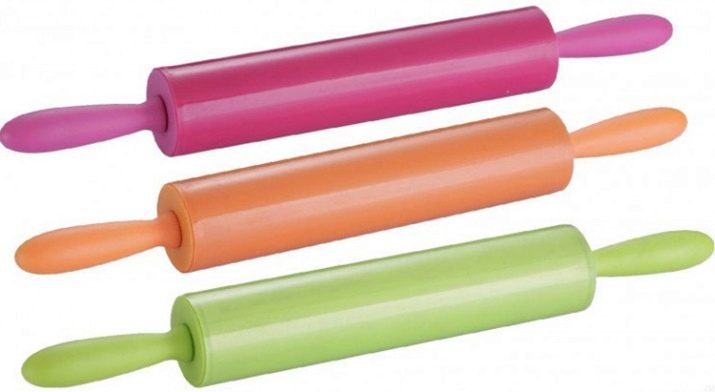
Metal (stainless steel)
A stainless steel rolling pin is not often used by housewives, but in a professional kitchen it is a fairly common and necessary "unit". First of all, A professional rolling pin is valuable because it can be used to roll out absolutely all types of dough. At the same time, the material does not run the risk of becoming covered with cracks and burrs, therefore, we can talk about its durability. In addition, due to its heavy weight, metal utensils are convenient to use for a viscous, inelastic dough, roll out large layers.
Slightly less often, aluminum is used, with which it is comfortable to roll out softer and more elastic dough. Also, the accessory is suitable for crushing nuts and spices by rolling them. If the recipe calls for it, you can heat or cool the metal rolling pin. It is quite easy to care for it, you can use the dishwasher.
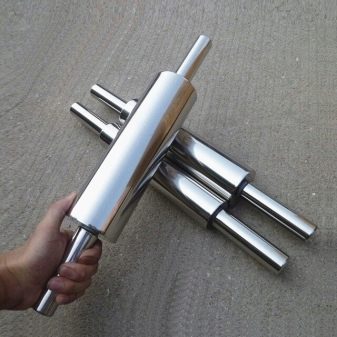
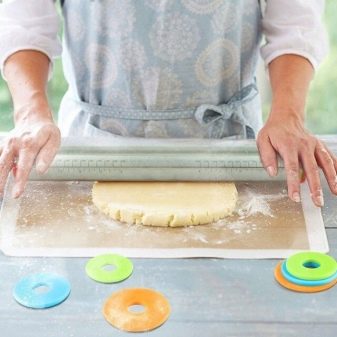
The disadvantage of a metal accessory is the difficulty of working with it. It is not easy to adapt to such a rolling pin, it is important to choose the right thickness. Metal rolling pins are solid and combined - that is, a metal work surface is combined with wood or silicone handles.
Metal rolling pins are often made hollow to fill the interior with water. This allows you to adjust the weight of the rolling pin and change its temperature. For example, if the dough contains butter, and it is important that it does not melt, cold water is poured into the rolling pin. If, on the contrary, it is necessary to warm the dough to improve its elasticity, pour warm water.

Glass (ceramics)
An option not for daily use, which, however, is suitable not only for rolling dough, but also for sugar mastic, minced meat and fish, marmalade, chocolate mass. It is clear that this is a rather fragile product that requires careful handling. Very often glass rolling pins are made hollow, but if desired, they can be filled with cereals. The latter helps to regulate the weight of the rolling pin. In addition, such an accessory will become an interior decoration.
Glass rolling pins can also include porcelain and ceramic, the classification is made on the basis of their decorative similarity and fragility. It is important to protect the glaze on such products from chips, sudden temperature changes.

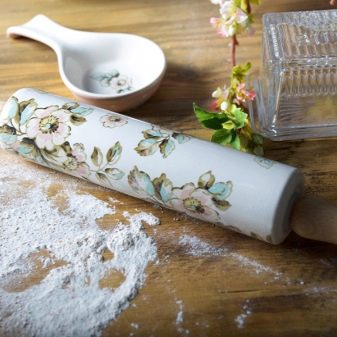
Stone
Stone rolling pins, along with wooden ones, appeared among the first in the arsenal of housewives and professionals. Then they disappeared from use, but now they are reviving again and are characterized by a high cost. First of all, it is worth noting their respectable appearance and impressive weight (on average 2 kg). These rolling pins are ideal for tough dough. It is especially convenient in this case to work with a rolling pin made of marble. But a thin and delicate dough requires the development of special skills to work with a stone accessory.
Stone products, if necessary, can be heated and cooled, however, this should not be done abruptly. Such temperature jumps are fraught with the appearance of cracks on the surface. The same applies to bumps, accidental falls of the rolling pin. That is why, despite the strength of the stone, the model still requires careful handling.
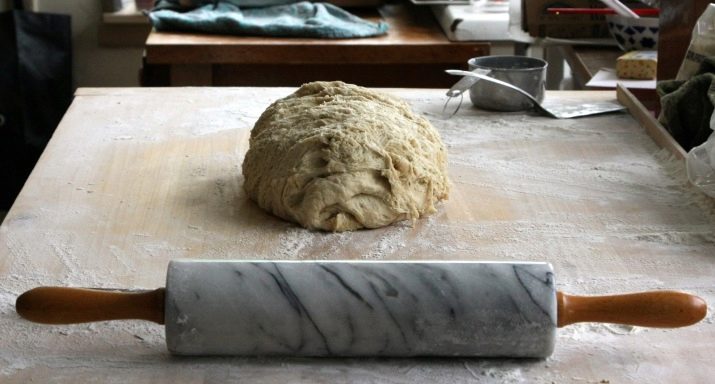
Plastic
A modern material that is resistant to water, grease, temperature extremes. The plastic accessory rolls out the dough quite well, it does not stick to the surface of the accessory, you can transfer the dough to a baking sheet using a rolling pin. However, all these properties are real only if the model is made of high quality food grade plastic. If there is no exact information about the manufacturer and the material, it is better to refuse the purchase.
An important point - you cannot keep plastic utensils near ovens, washing in a dishwasher is undesirable.
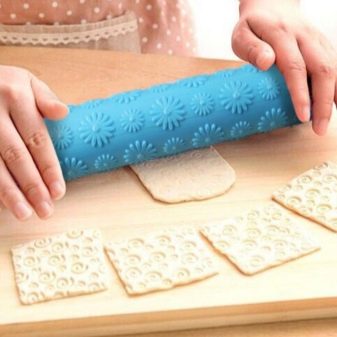

Design options
There are rolling pins with a centimeter ruler applied to the surface. They allow you to roll out the dough of the same size, which is especially important in the work of professional bakers and confectioners - the finished baked goods are perfect in size.
If you need to strictly regulate the thickness of the dough, you should pay attention to the rolling pin with special clamps.Thanks to the latter, the working surface of the rolling pin simply does not fall below the specified parameter, and the dough is obtained with the required thickness.
As limiters, special rings are used, which are worn on both sides of the rolling pin. Rings can be in a set, providing the desired thickness of the dough, in this case, each time you need to select new rings and put them on. In addition, the rings can be built-in, and then it is enough to scroll them by setting the desired height parameter.
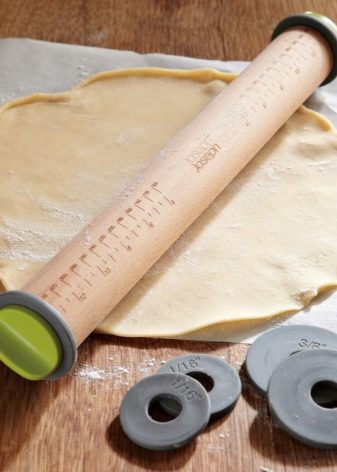
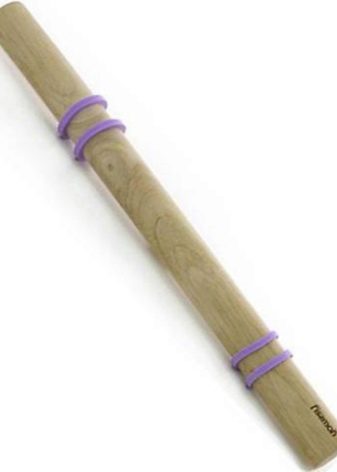
A curly rolling pin with a pattern or inscription is designed to decorate baked goods. It is not suitable for rolling out dough. A carved rolling pin with patterns is used already on a layer ready for cutting; the tool with a pattern should be passed through the dough strictly once. Otherwise, the drawing will be disturbed. A patterned rolling pin can have a variety of designs: from a small print for cookies to a more pronounced one for gingerbread and pies. Thanks to such an assistant, it is possible to easily and quickly decorate any baked goods.
Please note that this rolling pin is not suitable for all types of dough. If you put an ornament or pattern on a dough that rises in the oven (for example, yeast), it will simply disappear. But on the shortbread dough, the pattern will remain pronounced.
For cookies and gingerbread, it is better to choose not just a rolling pin with an ornament, but a special model that divides the dough layer into segments. It is enough to walk it over the dough so that it is divided into cookies or gingerbread with a pattern. All that remains to be done is to cut the products along the outlined lines.

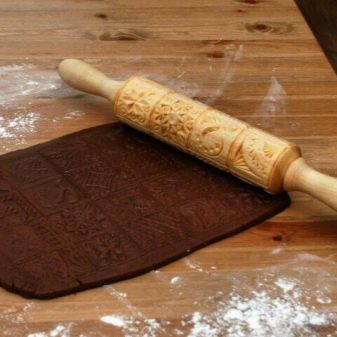
Review of the best models
Experts call the silicone model from the brand one of the best modern rolling pins. Stahlberg. It is a metal base on which a silicone casing is stretched. In addition to its stylish appearance, this ensures the strength and functionality of the rolling pin. When working with a rolling pin from this German manufacturer, you don't have to make much effort - just grab the handles and press harder on the dough. The latter does not stick to the silicone, and the utensils roll out even tight layers.
Optimum weight, striking design (silicone coating is available in several colors) and affordable price - these are the advantages of the rolling pin.
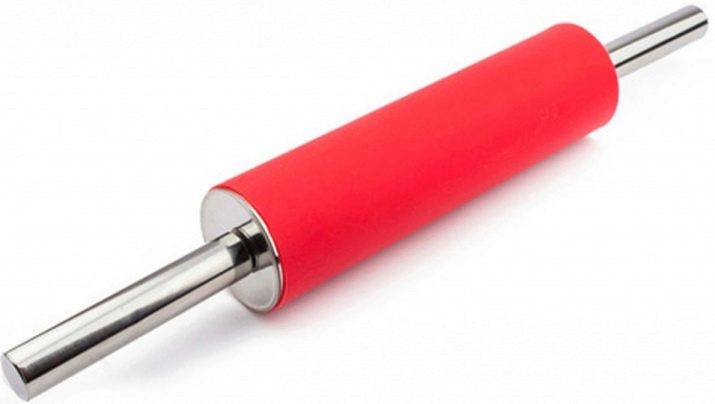
If you do not yet have experience in rolling dough, but dream of perfect baking, dumplings and noodles, pay attention to the model that allows you to adjust the thickness of the dough. The trust of customers has won the products of brands such as Mastrad and Tescoma... The first one has 3 removable rings for rolling out dough for pizza, noodles and cookies. The second model does not have removable rings; special supports are used to adjust the thickness of the layer. The height of the latter is adjusted by scrolling a special valve on a rolling pin.
Both options are made of food grade plastic. The dough does not stick to the surface, the product itself is convenient to use and easy to clean. Another brand that produces quality rolling pins that regulate the thickness of the dough is Tupperware.
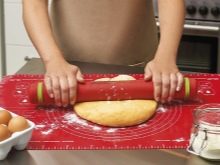
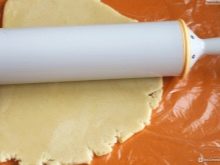

For rolling puff, shortcrust and unleavened dough, it is recommended to use a stainless steel product "Multidom" (China). It is a classic rolling pin with polypropylene handles in bright colors. It can be attributed to the universal varieties - the length is 42 cm. But the weight to some may seem insufficient for rolling out a tight dough (200 g). But thanks to the roller working cylinder, the work does not take much effort.
Additional advantages: ease of care, the ability to wash the accessory in the dishwasher.


For dense dough, a spectacular rolling pin from Premier Housewares. The marble product with a wooden support and the same handles is 26 cm long and is especially effective for puff pastry.
Like all stone rolling pins, this model has a considerable cost and requires careful handling. Its weight is impressive - 2 kg.
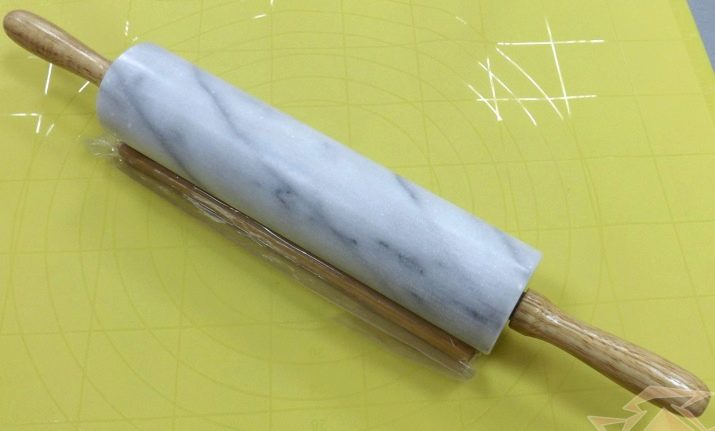
How to choose a rolling pin?
Before buying, you need to hold a rolling pin in your hands, try to roll out an imaginary dough. You should be comfortable, the weight of the product should not lead to fatigue of the hands... Swipe over the work surface, inspect it. It should be smooth, free of jagged edges or bumps. This is often the fault of manufacturers of cheap wooden rolling pins. If there are dents and irregularities on the metal rolling pin, this indicates improper storage of the product - most likely, the accessory was dropped.
Of course, it is important to consider why you are purchasing a rolling pin. If you are looking for a universal model, and do not often do dough, choose utensils 25-30 cm long. If you often cook noodles, dumplings, pies or cakes with thin cakes, a half-meter helper will come in handy. And when there is not much space in the kitchen, and you most often make small pies or roll out dough for dumplings and dumplings one by one, it makes sense to purchase a small rolling pin 7-10 cm long.

For more information on the rolling pin, see the next video.









About rolling pins - full detailed article! Thanks.